open main page for all woods open page 2 for articles
An illustrated discussion on the confusion among the names
lacewood, leopardwood, planetree, sycamore, silky oak and others
I am not fully confident that I have totally sorted all of this out properly, so take what I say with a grain of salt and my apologies if I've gotten any of it wrong, although how the hell anyone would ever KNOW if I've gotten any of it wrong is beyond me, since the multitudinous reports are so contradictory that compiling what you see here took me many, MANY hours and REALLY made my head hurt. In fact, the compilation of this discussion is based on research that made me realize for the first time in my life that it is possible to have a headache that requires the Richter scale to properly describe it.
A NOTE ABOUT NAMES FOR LEOPARDWOOD AND BRAZILIAN LACEWOOD IN PARTICULAR
After much research and consultation with numerous knowledgeable wood people, this is my conclusion on the botanical names used for leopardwood and Brazilian lacewood:
- Panopsis rubellens: a totally incorrect (nonexistent) botanical name that is none-the-less in very widespread use with the common name leopardwood.
- Panopsis rubescens: The correct botanical name for leopardwood
- Roupala brasiliensis: an older name, now considered just a synonym of Roupala montana but which is none-the-less in very widespread use with the common name Brazilian lacewood
- Roupala montana: the correct botanical name for Brazilian lacewood
A general note: ALL of the species mentioned in this discussion have MANY common names beyond just the ones mentioned here. I've not brought in that level of detail because this is already cluttered enough; I've stayed limited pretty much to just those names that are related to any possible confusion among these species due to cross-use of common names. This discussion is an attempt to sort all that out, to the extent that it can BE sorted out. In listing the various common names that are cross-used between different countries, I am careful to make the distinction, but when I use a name just in general, I am always using the USA naming convention (so, for example, if I say "it looks like sycamore" it should be clear that I mean Platanus occidentalis and not Acer pseudoplatanus). Also, I have not brought in all of the other species that use the common names discussed here (there's a short list at the very bottom of this page). Most, if not all, of the common names in this discussion are used, in addition to the species listed here, by another dozen or two dozen species each, but few of them (I'd like to think none, but I doubt I've been that thorough) are sold in the USA using the names shown here. That is, the species names used here are those that refer to the woods meant by the common names used here, that is those common names that are used in the USA.
The names lacewood, leopardwood, sycamore, and silky oak all refer (in the USA) to woods that have large, obvious, ray flakes in quartersawn cuts and there is enormous cross-use of common names and confusion among various of the species that these common names represent. Also, there is sometimes great similarity in actual wood appearance and that of course adds to the possibilities for confusion. There are some other woods that also get into the game, more because of name confusion than due to any likelihood that the woods themselves would be confused. The most notable exception to that is macademia, which I HAVE included here because it bears a striking resemblance at times to EACH of the following: sycamore, lacewood, and silky oak.
Another wood that should, perhaps, be put here as well, because of appearance is fishtail oak, which is an Australian wood that is remotely related to, and bears great similarity in appearance to, silky oak. I have not included it here because it is not readily available in the USA. Yet another wood that bears some resemblance to lacewood is corkwood, but I am completely unfamiliar with this wood (other than having a couple of images provided by one of my correspondents) and it is also not readily available in the USA.
The woods discussed are presented in the alphabetical order of their binomial name and the discussions are
about the APPEARANCE of the woods; this discussion does not involve working characteristics / price / availability
Acer pseudoplatanus of the family Aceraceae / harewood [USA] / sycamore [UK] --- This wood is totally unrelated to, and does not resemble, any of the other woods discussed here (it's a maple and one of its common names is sycamore maple). It is called sycamore or harewood in England and is also called (European) plane or planetree in the USA and Europe but not, as I understand it, in the UK where the name plane or planetree or London plane is used for Platanus acerifolia (see below). It is native to the UK and Europe. It does NOT have the ray flakes associated with sycamore or lacewood or leopardwood or silky oak and could not possibly be confused for any of them. In fact it is not readily distinguished from any other curly hard maple, as you'll see on the "maple, curly" page of this site. The name lacewood seems to be normally limited to the quartersawn cuts of this wood, and I have no idea why it is applied even there since there is nothing lace-like about it. Note that even the NAME means "false sycamore" and again, nothing about its appearance suggests lacewood / leopardwood / sycamore / silky oak. The cross-use of the names is apparently based on the characteristics of the TREES (Acer pseudoplatanus and Platanus occidentalis) not the characteristics of the wood, but I know nothing about trees and have not done any research to confirm that statement.
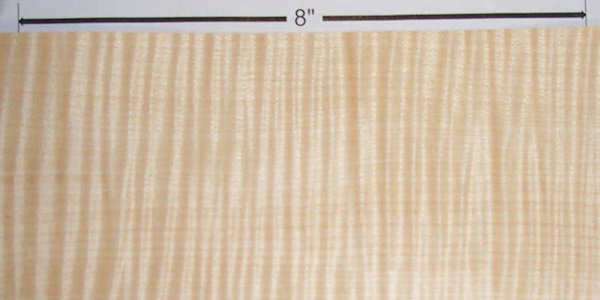
Cardwellia sublimis of the family Proteaceae / Australian lacewood --- This wood is native to Northern Australia where it is called silky oak, but in the USA it is called lacewood or Australian lacewood. In Australia it is often called not just silky oak, but Northern silky oak or Queensland silky oak, as opposed to Southern silky oak which is the name most commonly used for Grevillea robusta (see below). Cardwellia sublimis is perhaps THE most confusing of the woods in this whole discussion, both because it is widely called both lacewood and silky oak AND because it sometimes looks more like one and some times more like the other. It was overharvested in Autralia and is now not much available. I have it anecdotally that when this wood was first imported into the USA many years ago, it was called lacewood and there was no confusion because at that time, Brazilian lacewood (which is NOW what is meant in the USA by the name lacewood) was not yet being imported, nor was silky oak. When sources of Cardwellia sublimis from Australia dried up, importers started getting Roupala brasiliensis from South America and just kept the name lacewood. Then, silky oak (Grevillea robusta) started being imported to the USA but sometimes called lacewood and all the confusion REALLY got going. I have seen comments to the effect that, while you will sometimes see wood sold as Australian lacewood, what you get will more likely be Roupala brasiliensis. I also believe that some of the wood sold as Cardwellia sublimis may well be Grevillea robusta, but I am less certain about that. In short, I think that regardless of naming conventions, Cardwellia sublimis is not much (if at all) sold in the USA today and many of the pics of Australian lacewood back on my main site are from Australia, not the USA.
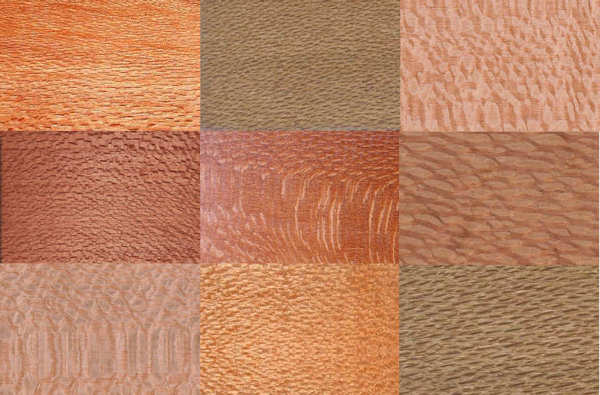
Grevillea robusta of the family Proteaceae / silky oak --- This wood has the common name (Australian) Southern silky oak and "yellow lacewood" and "yellow silky oak" but is also called lacewood in the US and elsewhere, although it looks significantly different than the woods that are most commonly called lacewood in the USA (Roupala brasiliensis and Cardwellia sublimis, both discussed on this page) and it is not likely to be confused with them. It is native to Southern Australia and has the name "Southern" silky oak to distinguish it from Cardwellia sublimis which is commonly called "Northern" silky oak but is more appropiately called Australian lacewood. Further, The Wood Book, and other authorities list Grevillea robusta as silky oak, so on this one at least I feel I'm on pretty solid ground.
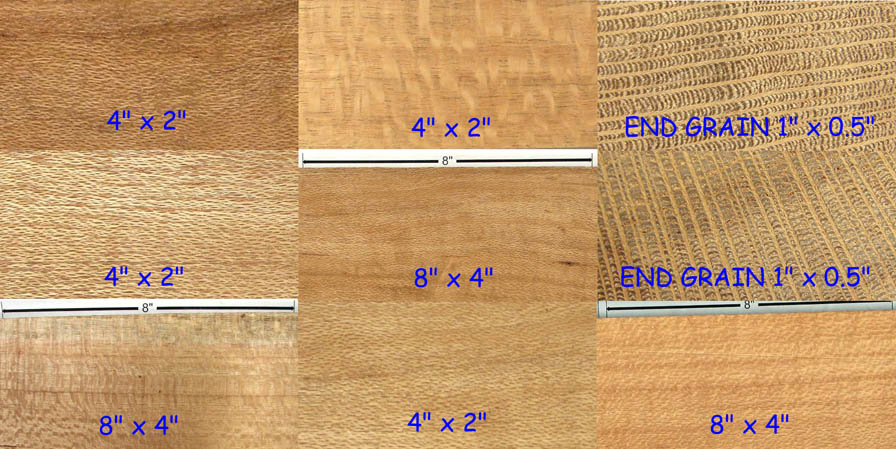
Macadamia spp. of the family Proteaceae / macadamia --- because it bears such a striking resemblance to three other woods on this page, sycamore, silky oak, and lacewood, I have included it here. I also note that this wood has a particularly dense spread of rays and often has very long ray flakes.
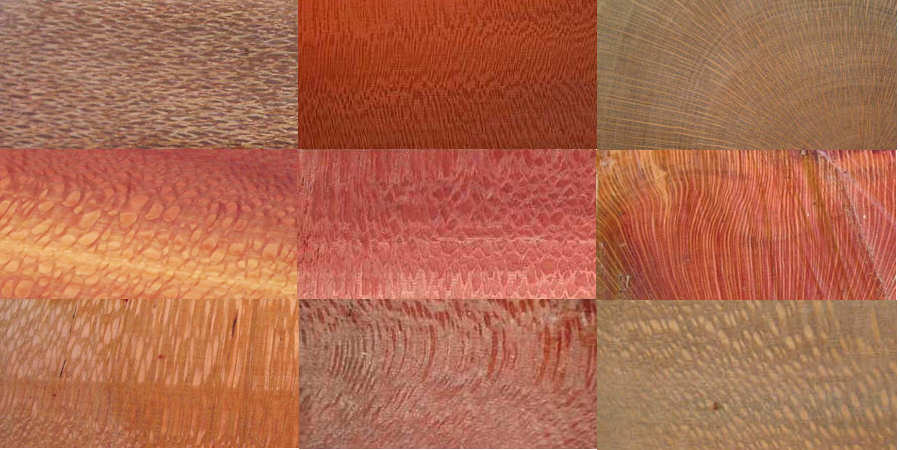
Panopsis rubescens of the family Proteaceae / leopardwood --- This South American wood has an appearance VERY similar to Roupala montana (South American lacewood) but can often be distinguished from it with a small amount of experience; it is darker brown in color and is harder and heavier and with a noticeably finer texture. It is sometimes called lacewood just as lacewood is sometimes called leopardwood. Out of all the woods mentioned in this discussion, the two woods Panopsis rubescens and Roupala montana are by far the most likely to be confused with each other, because they share both common names and characteristics AND both have widespread useage that is incorrect (the actually non-existent botanical name Panopsis rubellens for leopardwood and Roupala brasiliensis, which is now just a synonym, for Brazilian lacewood)
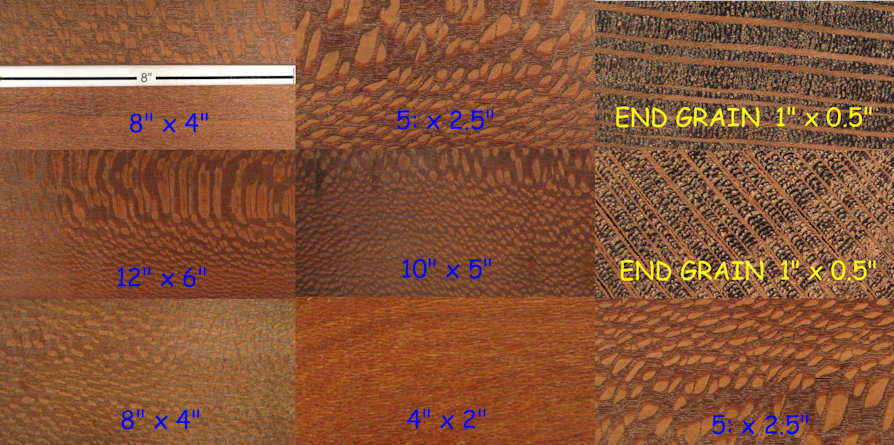
Piratinera guianensis (syn. brosimum guianense) of the family Moraceae / snakewood --- This wood does not resemble any of the other woods discussed on this page (or for that matter, as far as I know, any other wood in the world), but it is included here because it is also called leopardwood; this is not surprising, because it actually LOOKS more like a leopard's spots than do any of the woods that are more commonly called leopardwood. The name snakewood is rather obvious when you look at how the pattern resembles the spots on some snakes. In the UK it is called letterwood because the patterns of spots apparently reminded the British of Egyptian hieroglyphics. Just to add to the joy and confusion, there are at least 17 OTHER species that have snakewood as all or part of one or more of their common names. A note on the composite pic below: the 3 in the middle are mine so I know the colors are correct; the others may have been enhanced, and certainly most/all of them are moistened or waxed wood, not raw wood the way mine are. Also, mine are cheaper pieces and are largely unfigured.
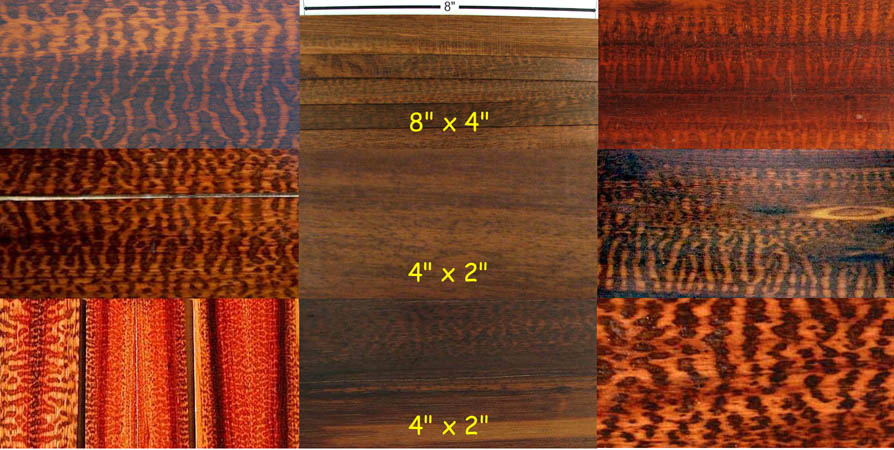
Platanus x acerifolia (generally listed without the "x" and often misspelled as acerfolia, without the "i") of the family Platanaceae / European plane --- The wood, which is native to the UK and parts of Europe, also has the common name "European lacewood" but it doesn't look like lacewood, it looks like sycamore (hey ... it is after all not just in the same family as sycamore, it's in the same genus). Also called (1) English plane in the UK and Europe (2) lacewood in the UK and (3) London plane everywhere (possibly, it's called London plane more than European plane, but I used the name European plane and see no reason to change since it's pretty much called either one). Platanus acerifolia is a hybrid between American sycamore (Platanus occidentalis) and oriental planetree (Platanus orientalis) and can be impossible to distinguish from American sycamore. Because it is a hybrid, it is sometimes listed as Platanus hybrida but that is not really a species name.
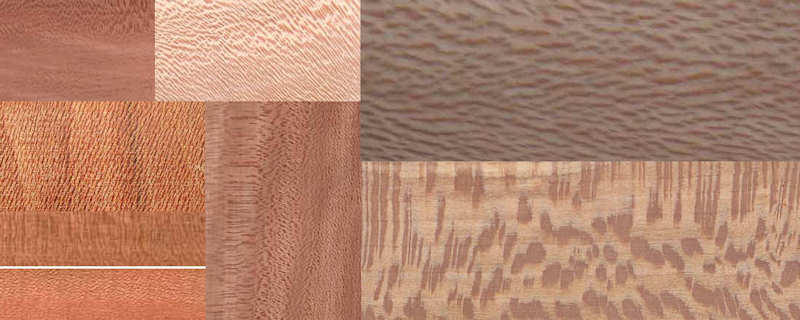
Platanus occidentalis of the family Platanaceae / sycamore --- other species include Platanus racemosa (sometimes called California sycamore) and Platanus wrightii (generally called Arizona sycamore). There is another species, Platanus orientalis, which is properly called oriental planetree but it is, as far as I know, indistinguishable from Platanus occidentalis and is sometimes sold as sycamore. Although in the same family (but not the same genus) as South American and Australian lacewood, sycamore would never be confused with them as it is a significantly different color and generally has much smaller rays. It is what we mean in the USA when we say "sycamore" but in the UK it is called plane or English lacewood. I have seen this species reported, erroneously I am sure, as both leopardwood and Brazilian lacewood. There are at least 15 OTHER species that have sycamore as all or part of one or more of their common names (in addition to the ones reported on here), so there's lots of room for confusion in the names.
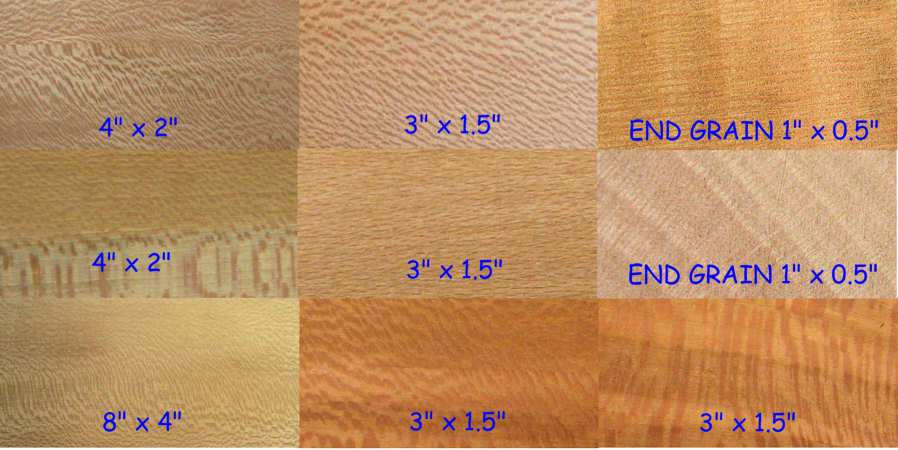
Roupala montana of the family Proteaceae / Brazilian lacewood --- This wood is from South America and is properly called South American lacewood or Brazilian lacewood, but it is also called leopardwood although it is NOT the wood that is normally meant by the name "leopardwood" (see Panopsis rubellens above). It is what is normally meant in the USA by the name lacewood. On the other hand, it LOOKS very similar to leopardwood and the cross-use of names PLUS the great similarity in appearance makes for easy confusion between the two. Out of all the woods mentioned in this discussion, the two woods Panopsis rubescens and Roupala montana are by far the most likely to be confused with each other, because they share both common names and characteristics AND both have widespread useage that is incorrect (the actually non-existent botanical name Panopsis rubellens for leopardwood and Roupala brasiliensis, which is now just a synonym, for Brazilian lacewood).
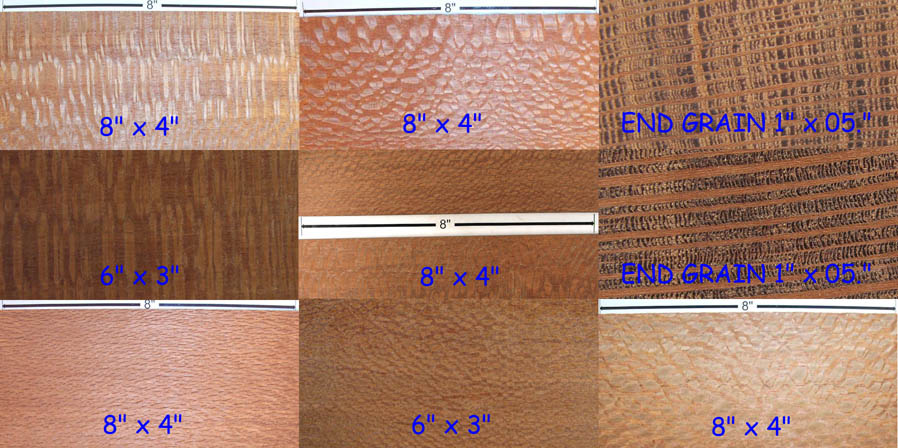
Then there are woods that, as far as I am aware, should NOT be confused with any of the above in terms of appearance but which do share one or more of those common names. These include the following listed below. I do NOT contend that this list is comprehensive and in fact I am already aware of numerous addition that I will make eventually. I don't consider this section of the discussion particularly important and I am TIRED of this whole subject! Since I have not seen any of these woods, I could certainly be wrong about whether or not they could/should be confused with any of the primary woods listed in this discussion but they are listed here just because of the common names. Each of these, of course, may have from a few to many dozens of other common names.
Euplassa guianensis / leopardwood (Brazil)
Flindersia collina / leopardwood (Australia)
Flindersia maculosa / leopardwood (Australia)
Panopsis rubra / leopardwood (it IS a sister wood to Panopsis rubescens so might look very similar)









